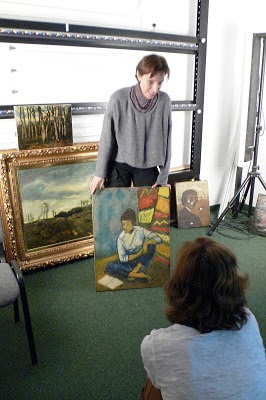 Amelia,Bar Leonardi,Caffe Grande,Massimo's
Amelia,Bar Leonardi,Caffe Grande,Massimo's
 No comments
No comments
Amelia, Umbria: Everyone gathers at Bar Leonardi


by Catherine Schofield Sezgin
Amelia is a beautiful walled medieval town about an hour drive north of Rome. It can also be reached from Rome by taking a train to Orte, then taking either a bus or a taxi to Amelia. Most visitors directed to Amelia are instructed to meet their host where all roads leading to the old town converge: Bar Leonardi, an establishment across from the main entrance to the old town, the Porta Romana, and on a piazza adjacent to a park.
Bar Leonardi opens very early in the morning and stays open late and, most importantly, in Italy, it stays open all day. In the morning, customers typically pick up espressos and cornettos, read newspapers, and greet friends and business partners. In the afternoon, during siesta, the bar can be quiet except for customers dashing in to play the lottery or to pick up cigarettes. After siesta, people emerge and gather again, drinking prosecco and more coffee. Of course, only the Americans order lattes and cappucinos so late in the day and although the server may admit to a wry smile, he will bring the milk-based drinks that cease for Europeans by 11 a.m.
I have just a bit of advice for a regular customer at Bar Leonardi: be consistent. Espresso drinks are inexpensive and plentiful; however, the cashier, who is often the ever-present owner, prides himself upon greeting you by remembering your order and the whole charm of buon giorno will be marred if you have to correct him with your whim of the day.
If you like a cappucino, then a latte, and maybe an espresso later on, I recommend that you order a cappucino from Bar Leonardi, another from Massimo's Pattisserie across the street, then cross the piazza to the smaller bar run by the red-headed Amelia to order a latte, and when you're ready for your fourth drink, maybe another latte or cappucino in the afternoon, you can visit Caffe Grande inside the walls and their staff will prepare you anything and include an artificial sweetner if you prefer.
Decaffeinated espresso is always available in Amelia's coffee bars. My bartenders well remember me for my order of 'decaffinato doppio cappuccino, per favore' which was a unique request in Italy although not in California where I normally reside. In Amelia, the cappucino is one euro or less; in Los Angeles, it's $4 so you can understand my free-for-all on the decaffeinated drinks.
Another reason people go to Bar Leonardi: everyone in town eventually goes to or passes Bar Leonardi so you can just sit at an outside table and wait. If your friend doesn't walk by, someone who knows your friend will walk by, and you can inquire, have you seen so and so, and that friend will be able to say, yes, I just saw them in Punto di Vino or at the Biblioteca because it only takes about 15 minutes and a pair of strong legs to cover the commercial area of Amelia which offers a few grocery stores, a couple of great eating establishments, many takeout places, and boutique clothing stores.
Later we'll talk about procuring food in Amelia -- when restaurants are open and closed requires knowledge of the weekly schedule.







